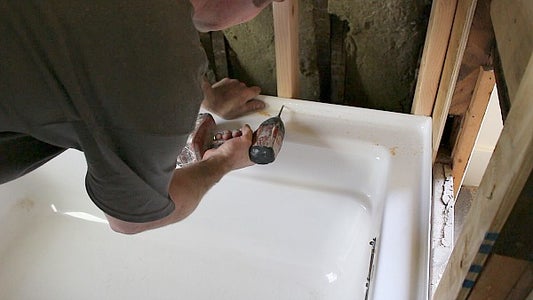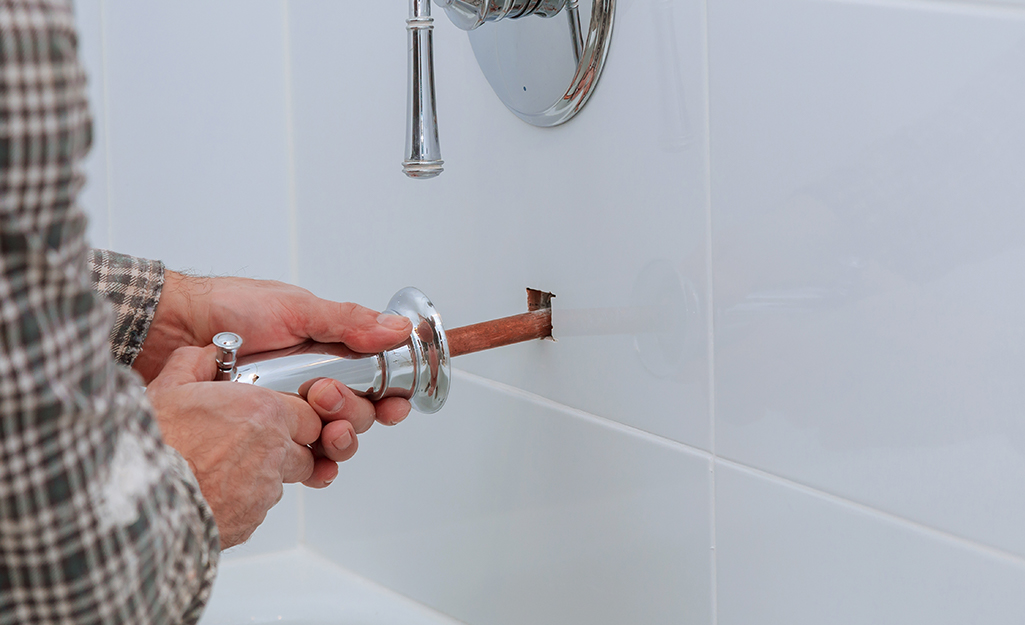Everybody has got their own rationale on the subject of How to Install a Bathtub.

Mounting a tub isn't precisely brain surgery, yet it does need solid plumbing, carpentry, and also occasionally, tiling abilities. Changing an old bathtub with a new one is additionally a reasonably challenging task. If the old tub is readily available, the task can move speedily; if you have to open up a wall to eliminate the old bathtub and place the new bath tub, the job is a lot harder. In either situation, the task is within a residence handyman's abilities, although you will need an assistant to leave the old bathtub and set in the brand-new one. Make certain you have certified yourself for the work as well as are comfortable trying it. Rather than hiring a service provider to take over a halfway-completed job, it is much better to consider using one prior to you start. Chances are you might require a specialist plumber to make tube links.
This write-up will help you install a new bath tub in your shower room if you have currently bought a brand-new bathtub as well as do not need to change the arrangement of your previous water pipelines.
Your devices and material list need to consist of the following:
Removing Old Taps
If you require to replace old taps with brand-new ones as a part of your installment, after that the first thing you ought to do is disconnect the supply of water. After doing so, turn on the faucets to drain pipes any kind of water continuing to be in the system. The process of removing the existing taps can be rather troublesome due to the limited access that is commonly the situation.
Utilize a basin wrench (crowsfoot spanner) or a tap tool to undo the nut that connects the supply pipelines to the taps. Have a cloth prepared for the continuing to be water that will certainly originate from the pipelines. Once the supply pipelines have actually been gotten rid of, use the same device to loosen up the nut that holds the faucets onto the bath/basin. You will require to quit the solitary taps from transforming throughout this process. Once the taps have actually been removed, the holes in the bath/basin will need to be cleaned up of any kind of old securing substance.
Before moving on to fit the new taps, compare the pipe connections on the old taps to the brand-new taps. If the old taps are longer than the brand-new faucets, after that a shank adapter is required for the new taps to fit.
Fitting New Touches
If the tails of the new faucets are plastic, after that you will certainly require a plastic adapter to prevent damages to the thread. One end of the port fits on the plastic tail of the tap and the various other end supplies a connection to the current supply pipes.
If you require to fit a monobloc, then you will call for decreasing couplers, which attaches the 10mm pipeline of the monobloc to the standard 15mm supply pipeline.
Next off, place the faucet in the installing opening in the bath/basin guaranteeing that the washers remain in place in between the tap and the sink. Protect the tap in position with the maker provided backnut. As soon as the tap is securely in position, the supply pipes can be linked to the tails of the faucets. The faucets can either be attached by utilizing corrugated copper piping or with typical tap ports. The former kind ought to be connected to the tap finishes initially, tightening up just by hand. The supply pipelines can later on be linked to the other end. Tighten both ends with a spanner after both ends have actually been attached.
Setting up the Bathtub
Utilizing the two wood boards under its feet, position the tub in the required position. The wood boards are practical in equally spreading out the weight of the bathtub over the area of the boards rather than focusing all the weight onto 4 tiny factors.
The next goal is to make sure that the bath tub is leveled all round. This can be attained by examining the spirit level as well as changing the feet on the bathtub up until the spirit level checks out degree.
To install taps, fit the bottom of the outermost versatile tap port to the suitable supply pipeline by making a compression join; then do the very same for the various other faucet.
Switch on the water supply and also inspect all joints as well as brand-new pipework for leaks and tighten them if necessary. Load the tub as well as likewise check the overflow electrical outlet as well as the regular electrical outlet for leakages.
Finally, deal with the bathroom paneling as explained in the producer's instruction manual. Tiling as well as securing around the tub must wait up until the bath tub has actually been made use of a minimum of once as this will resolve it right into its last position.
Planning for the Installment
To start with, the sustaining frame provided with the bath ought to be fitted (if needed) according to the supplier's directions. Next, fit the taps or mixer to the tub. When suitable the tap block, it is necessary to see to it that if the faucet comes with a plastic washer, it is fitted in between the bath as well as the faucets. On a plastic bathroom, it is also practical to fit a sustaining plate under the faucets system to stop pressure on the bath tub.
Fit the adaptable faucet connectors to the bottom of both taps making use of 2 nuts as well as olives (in some cases supplied with the bathtub). Fit the plug-hole electrical outlet by smearing mastic filler round the sink outlet hole, and then pass the electrical outlet with the hole in the bath. Use the nut provided by the maker to fit the plug-hole. Take a look at the plug-hole electrical outlet for an inlet on the side for the overflow pipe.
Next off, fit completion of the adaptable overflow pipe to the overflow outlet. After that, screw the pipeline to the overflow face which ought to be fitted inside the bath. Make certain you use every one of the supplied washing machines.
Link the catch to the bottom of the waste outlet on the tub by winding the thread of the waste electrical outlet with silicone mastic or PTFE tape, as well as screw on the catch to the electrical outlet. Attach the bottom of the overflow tube in a similar manner.The bath must now prepare to be fitted in its last setting.
Tiling Around the Bathtub
In the location where the bathroom meets the ceramic tile, it is required to seal the accompanies a silicone rubber caulking. This is necessary as the fitting can relocate enough to split a rigid seal, triggering the water to penetrate the wall surface in between the bathroom as well as the tiling, leading to problems with dampness as well as possible leaks to the ceiling below.
You can pick from a variety of coloured sealers to assimilate your fixtures and also fittings. They are marketed in tubes and cartridges, as well as can securing spaces approximately a size of 3mm (1/8 inch). If you have a bigger gap to load, you can load it with spins of drenched newspaper or soft rope. Remember to always fill up the bathtub with water prior to sealing, to allow for the movement experienced when the tub remains in usage. The sealant can break rather very early if you do not consider this motion before securing.
Additionally, ceramic coving or quadrant tiles can be used to border the bathroom or shower tray. Plastic strips of coving, which are easy to use as well as reduce to dimension, are also conveniently available on the market. It is advisable to fit the floor tiles making use of water-resistant or water-proof adhesive and also grout.
Bathtub Installation
How Important Is A Bathtub To Your Home?
High-quality baths, showers, and other bathroom updates are necessary when considering a smart investment in your home. It’s a room that you go to every day and one that is constantly being used by guests.The bathroom is one of the top trafficked rooms in a home and also one of the most valuable in terms of home resale.
Install Piping Before Tub
You will be using your existing drain and waste vent system, but pipes required include the hot and cold water supply lines and a pipe leading to a shower head. A mixing valve and shower head are also needed. Air chambers may be required.
Position the Tub
Lower the tub into place so that the continuous flange fits against the wall studs and rests on 1’x4' or 2’x4' supports. Anchor the tub to the enclosure with nails or screws inserted through the flanges into the studs.
NOTE: Remember, bathtubs and shower stalls may require support framing. A bathtub filled with water is extremely heavy, so check building codes and framing support before installing the tub.
Assemble Drain Connections
Assemble the bathtub drain connections by connecting the tub overflow with the tub drain above the trap, not beyond it. The trap will have a compression fitting that screws over the arm of the overflow assembly.
Place a Pipe For the Shower Head
First, locate a brass female threaded winged fitting and attach it to a framing support via a screw or a nail. Then run a pipe up the wall for the shower head. Sweat or solder the other side of the brass fitting to the top of the pipe.
Attaching Hot and Cold Water Lines
Attach your water lines for both hot and cold by sweating these directly into the hot and cold ports of the mixing valve. The mixing valve will be how water enters the tub’s system, not by the pipes themselves.
Install the Spout
Extend a piece of 1/2 inch pipe, or whichever length is specified in the manufacturer’s instructions, for the tub spout. Sweat on a male threaded fitting at the end of the pipe or use a brass nipple of the proper length and a 1/2 inch cap.
NOTE: At this point you should have your rough-in plumbing work inspected before proceeding further.
Check For Leaks
Restore the water pressure and check the drain connection and the supply pipes for any sign of leaking.
estore the Bathroom Wall
Replace the wall with moisture-resistant drywall as a base for your wall covering. Seal the joints between the wall and your new tub with silicone caulk as protection against water seepage.
https://www.berkeys.com/2016/12/02/bathtub-installation-dallas/

As a fervent person who reads on A Step-by-Step Guide to Installing a Bathtub, I imagined sharing that excerpt was sensible. Liked our piece? Please share it. Let others check it out. I am grateful for your time. Come back soon.
Quick fix? Dial now.